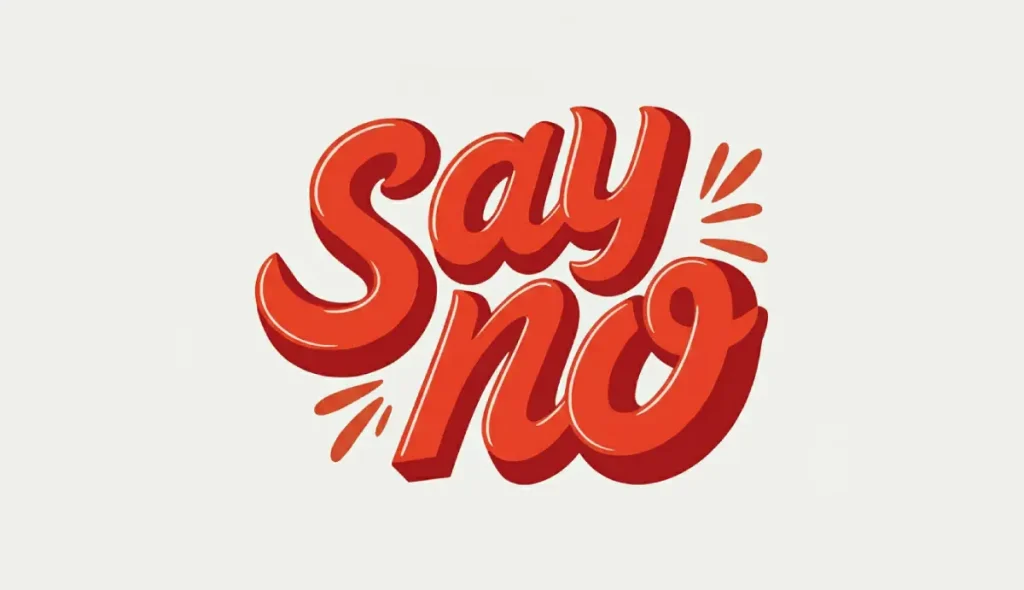Boost Team Members’ Productivity: 10 Performance Strategies
Let’s face it.
We’ve all been there.
I was staring at a team that’s about as productive as a sloth on a lazy Sunday.
Trust me, I’ve been in your shoes. When I started Inkbot Design, I thought productivity was about cracking the whip and keeping everyone’s nose to the grindstone.
Boy, was I wrong? 🤦♂️
After months of frustration, burnout, and near-mutiny, I realised something crucial:
Actual productivity isn’t about working harder. It’s about working smarter.
In this post, I will share my strategies to transform my team from clock-watchers to productivity powerhouses. And the best part? Not a single spreadsheet or time-tracking app is in sight.
🔰 TL;DR: Boost team productivity by fostering autonomy, setting clear goals, leveraging technology, and creating a positive work culture. Focus on results, not hours worked. Implement regular check-ins, provide growth opportunities, and celebrate wins. Remember, a happy team is a productive team.
- Focus on results: Actual productivity comes from working smarter, not just longer hours, as highlighted by University of Cambridge study.
- Create a positive culture: Foster well-being, celebrate wins, and encourage autonomy to enhance team morale and productivity.
- Leverage technology: Minimise tool overload; select essential platforms for project management and communication to streamline workflows.
- Continuous learning: Promote a growth mindset through learning opportunities and constructive feedback to maintain high performance.
The Productivity Paradox: Why Working More Doesn’t Work
Before we dive in, let’s bust a myth:
More hours ≠ More productivity
A 2023 study by the University of Cambridge found that companies implementing a 4-day workweek saw an average productivity increase of 12%. 📈
Why? Because productivity isn’t about time spent. It’s about the results achieved.
Think about it. Have you ever had a day where you “worked” for 8 hours but accomplished next to nothing?
Yeah, me too.
Let’s flip the script and focus on what moves the needle.
1. Set Clear, Inspiring Goals (And Follow Through)

The Power of Purpose
Have you ever tried to motivate a team to “do their best”?
It’s about as effective as trying to herd cats. With blindfolds on. In a thunderstorm.
People need direction. They need purpose. They need to know that their work matters.
Here’s how to set goals that light a fire under your team:
- Make them SMART: Specific, Measurable, Achievable, Relevant, Time-bound
- Involve the team: Get their input. They’ll be more invested in the goals they helped create.
- Break them down: Big goals are overwhelming. Smaller milestones are motivating.
- Visualise progress: Use a project management tool or a good old-fashioned whiteboard.
- Celebrate wins: Even small victories deserve recognition.
The Follow-Through Factor
Here’s where most leaders drop the ball:
They set great goals… and then forget about them.
Don’t be that leader.
Schedule regular check-ins. Not to micromanage, but to:
- Assess progress
- Remove obstacles
- Adjust course if needed
- Provide support and resources
Remember: Your team’s goals should be living and breathing things. Not just pretty words on a PowerPoint slide.
2. Foster Autonomy (Or: How I Learned to Stop Worrying and Trust My Team)
Want to kill productivity faster than you can say “TPS reports”?
Micromanage.
I learned this the hard way at Inkbot Design. I was so obsessed with controlling every detail that my team became paralysed. They were afraid to make decisions without my approval.
The result?
Projects moved at a glacial pace. Creativity withered. Morale plummeted.
Then I had an epiphany:
My job wasn’t to control. It was to enable.
Here’s how I turned things around:
The Autonomy Blueprint
- Clarify expectations: Be crystal clear about outcomes but flexible about methods.
- Provide resources: Give your team the tools and training they need to succeed.
- Encourage experimentation: Create a safe space for trying new approaches.
- Trust by default: Assume competence unless proven otherwise.
- Learn from failures: Treat mistakes as learning opportunities, not punishable offences.
The result?
My team blossomed. They started taking ownership, developing innovative solutions, and enjoying their work.
Productivity soared.
And? I got to focus on growing the business instead of micromanaging every detail.
Win-win.
3. Leverage Technology (Without Becoming Its Slave)

In today’s digital age, there’s a tool for everything.
Project management? Check. Time tracking? Check. Team communication? Double check.
But here’s the kicker:
More tools sometimes equal more productivity.
Tool overload can be a massive time-suck.
I once worked with a company with so many productivity apps that employees spent more time updating their status on various platforms than working.
Don’t fall into that trap.
The Tech Trifecta
Focus on these three areas:
- Project Management: Choose one robust tool (e.g., Asana, Trello, ClickUp) and stick with it.
- Communication: A good chat app (like Slack) and video conferencing tool (e.g., Zoom) should suffice.
- Document Collaboration: Google Workspace or Microsoft 365 are solid choices.
That’s it.
You don’t need 17 different apps to be productive.
The fewer, the better.
The Human Touch
Remember: Technology should enhance human interaction, not replace it.
No amount of fancy software can substitute for a good old-fashioned face-to-face (or video-to-video) conversation.
Use tech to streamline processes and eliminate busy work. But when it comes to brainstorming, problem-solving, or providing feedback?
Nothing beats real-time human interaction.
4. Create a Culture of Continuous Learning
Want to know the secret sauce of high-performing teams?
They never stop learning.
At Inkbot Design, we are committed to continuous improvement. And let me tell you, it was a game-changer.
Here’s how you can foster a learning culture:
The Growth Mindset Toolkit
- Encourage curiosity: Make it safe to ask questions and challenge the status quo.
- Provide learning opportunities: Offer workshops, courses, or conference attendance.
- Cross-train team members: It builds empathy and uncovers hidden talents.
- Share knowledge: Implement a system for documenting and sharing learnings.
- Lead by example: Be open about your learning journey and mistakes.
The Feedback Loop
Create a culture where feedback flows freely – not just top-down, but in all directions.
- Regular 1-on-1s: Not for status updates, but for genuine conversations about growth and challenges.
- 360-degree reviews: Get feedback from peers, not just managers.
- Anonymous suggestion box: People might hesitate to openly voice their ideas or concerns.
Remember: Feedback is a gift. Treat it as such.
5. Prioritise Well-being (Because Burnout is Productivity’s Kryptonite)

Let’s get real for a second.
You can have the most motivated, skilled team in the world. But if they’re running on fumes, their productivity will tank.
I learned this lesson the hard way.
In the early days of Inkbot Design, we were all about the hustle. 14-hour days, working weekends, scarfing down lunch at our desks.
We thought we were being productive.
In reality? We were digging ourselves into a burnout pit.
The Well-being Gameplan
Here’s how we turned things around:
- Encourage breaks: Implement the Pomodoro technique or similar structured break systems.
- Promote work-life balance: Lead by example. Don’t send emails at midnight.
- Offer flexible working: Trust your team to manage their time.
- Prioritise mental health: Provide resources and destigmatise mental health discussions.
- Create a pleasant work environment: Whether in-office or remote, the workspace matters.
The Productivity Paradox (Part 2)
Here’s the mind-bender:
Sometimes, to get more done, you need to do less.
Encourage your team to:
- Take their complete lunch break
- Use their vacation days
- Disconnect after work hours
The result?
They’ll come back refreshed, recharged, and ready to crush it.
6. Foster Collaboration (Without Drowning in Meetings)
Teamwork makes the dream work, right?
Well… sort of.
Collaboration is crucial for innovation and problem-solving. But too much of it can kill productivity faster than you can say, “Let’s circle back on that.”
The key is to find the sweet spot between isolation and meeting overload.
The Collaboration Cheat Sheet
- Implement “No Meeting” days: Dedicate certain days (or half-days) to focused, individual work.
- Use asynchronous communication: Not everything needs a real-time response.
- Make meetings purposeful: Have a clear agenda and end with actionable next steps.
- Encourage cross-functional projects: But be mindful of overloading people.
- Create Both physical (if you’re in-office) and virtual collaboration spaces.
The Silent Productivity Killer
Beware the scourge of unnecessary meetings.
They’re like vampires, sucking the life (and productivity) out of your team.
Before scheduling a meeting, ask yourself:
- Could this be an email?
- Do all these people need to be involved?
- What’s the desired outcome?
You probably don’t need that meeting if you can’t answer these questions.
7. Embrace the Power of ‘No’

Here’s a hard truth:
Saying ‘yes’ to everything is saying ‘no’ to productivity.
At Inkbot Design, we used to pride ourselves on being “yes people.” We’d take on every project, agree to every client’s demand, and bend backwards to accommodate every request.
The result?
Overworked team members, missed deadlines, and subpar work.
The Art of the Strategic ‘No’
Learning to say ‘no’ was one of the best things we ever did for our productivity. Here’s how:
- Prioritise ruthlessly: Focus on high-impact tasks that align with your goals.
- Set clear boundaries: With clients, team members, and yourself.
- Learn to delegate: You don’t have to do everything yourself.
- Avoid scope creep: Stick to agreed-upon project parameters.
- Practice saying ‘no’ gracefully: It’s a skill that takes practice.
The Counterintuitive Productivity Booster
Here’s the kicker:
Saying ‘no’ more often allows you to say ‘yes’ to the things that matter.
It frees up time and mental energy for the tasks that truly move the needle.
And that, my friends, is the secret sauce of productivity.
8. Measure What Matters (And Ditch What Doesn’t)
In the world of productivity, not all metrics are created equal.
I once worked with a company obsessed with tracking every minute of their employees’ time. They had spreadsheets upon spreadsheets of data.
But you know what they didn’t have?
Results.
The Metrics That Matter
Focus on outcomes, not inputs. Here’s what to track:
- Goal achievement: Are you hitting your targets?
- Quality of work: Are you meeting or exceeding standards?
- Customer satisfaction: Are your clients happy?
- Team satisfaction: Is your team engaged and motivated?
- Revenue and profitability: Is your productivity translating to business success?
The Measurement Trap
Beware of vanity metrics. They look good on paper but don’t indicate success.
For example:
- Hours worked ≠ Productivity
- Number of meetings attended ≠ Collaboration
- Lines of code written ≠ Software Quality
Remember: What gets measured gets managed. So, make sure you’re measuring the right things.
9. Cultivate a Positive Work Environment

Let’s talk about the elephant in the room:
Negativity is a productivity killer.
I’ve seen toxic work environments suck the life out of even the most motivated teams. Gossip, blame-shifting, and constant criticism create a culture of fear and defensiveness.
And guess what?
Defensive people aren’t productive people.
The Positivity Playbook
Here’s how to create a work environment where productivity thrives:
- Recognise and reward: Celebrate wins, big and small.
- Encourage peer appreciation: Implement a system for team members to recognise each other’s contributions.
- Address conflicts quickly: Don’t let negativity fester.
- Promote transparency: Keep your team informed about company direction and challenges.
- Lead with empathy: Remember, your team members are humans, not productivity machines.
The Ripple Effect
Here’s the beautiful thing about positivity:
It’s contagious.
When you create a positive work environment, you set off a chain reaction. People become more collaborative, more creative, and, yes, more productive.
10. Embrace Flexibility (Because One Size Doesn’t Fit All)
If there’s one thing I’ve learned in my years running Inkbot Design, it’s this:
Productivity isn’t a one-size-fits-all concept.
What works for one team member might be a productivity killer for another.
The Flexibility Framework
Here’s how to create a flexible work environment that boosts productivity:
- Offer flexible hours: Some people are early birds, and others are night owls. Let them work when they’re at their best.
- Allow remote work: If the job can be done from anywhere, why not let it be?
- Accommodate different work styles: Provide both collaborative spaces and quiet areas.
- Personalise productivity tools: Let team members choose the best tools for them (within reason).
- Be open to experimentation: Encourage your team to try new productivity methods and share what works.
The Productivity Paradox (Part 3)
Here’s the mind-bender:
Giving people more freedom makes them more productive.
When you trust your team to manage their time and work style, they often rise to the occasion. They feel valued, empowered, and motivated to deliver results.
Conclusion: The Productivity Revolution Starts with You
There you have it, folks.
The blueprint for transforming your team into a productivity powerhouse.
But here’s the thing:
All the tips and tricks won’t make a difference if you’re unwilling to lead by example.
As a leader, you set the tone. Your actions speak louder than any motivational poster or company policy ever could.
So, are you ready to:
- Trust your team?
- Focus on outcomes, not hours?
- Prioritise well-being?
- Embrace flexibility?
- Create a positive work environment?
The productivity revolution starts with you. Are you in?
And hey, if you need help implementing these strategies or want to take your team’s productivity to the next level, we at Inkbot Design are here to help. Our branding and design expertise can help streamline your processes and create a work environment that fosters creativity and productivity.
Let’s make productivity a goal and a way of life.
FAQs: Boosting Team Productivity
How can I measure productivity in a creative field?
Rather than traditional time-based measures, focus on outcomes like project completion rates, client satisfaction, and innovation metrics.
What’s the best way to handle team members who consistently underperform?
Start with open communication. Identify barriers, provide necessary support, and set clear expectations. If issues persist, consider performance improvement plans.
How often should we have team meetings to maintain productivity?
Quality over quantity. Aim for one focused weekly team meeting and supplement with brief daily stand-ups if necessary.
Is it better to have specialists or generalists on a team?
A mix is often ideal. Specialists bring depth, while generalists offer flexibility. The right balance depends on your specific needs.
How can I prevent burnout in a high-pressure environment?
Encourage regular breaks, promote work-life balance, and ensure manageable workloads. Regularly check in with team members about their stress levels.
What’s the best way to introduce new productivity tools to the team?
Start with a pilot program, gather feedback, provide thorough training, and gradually phase in adoption.

